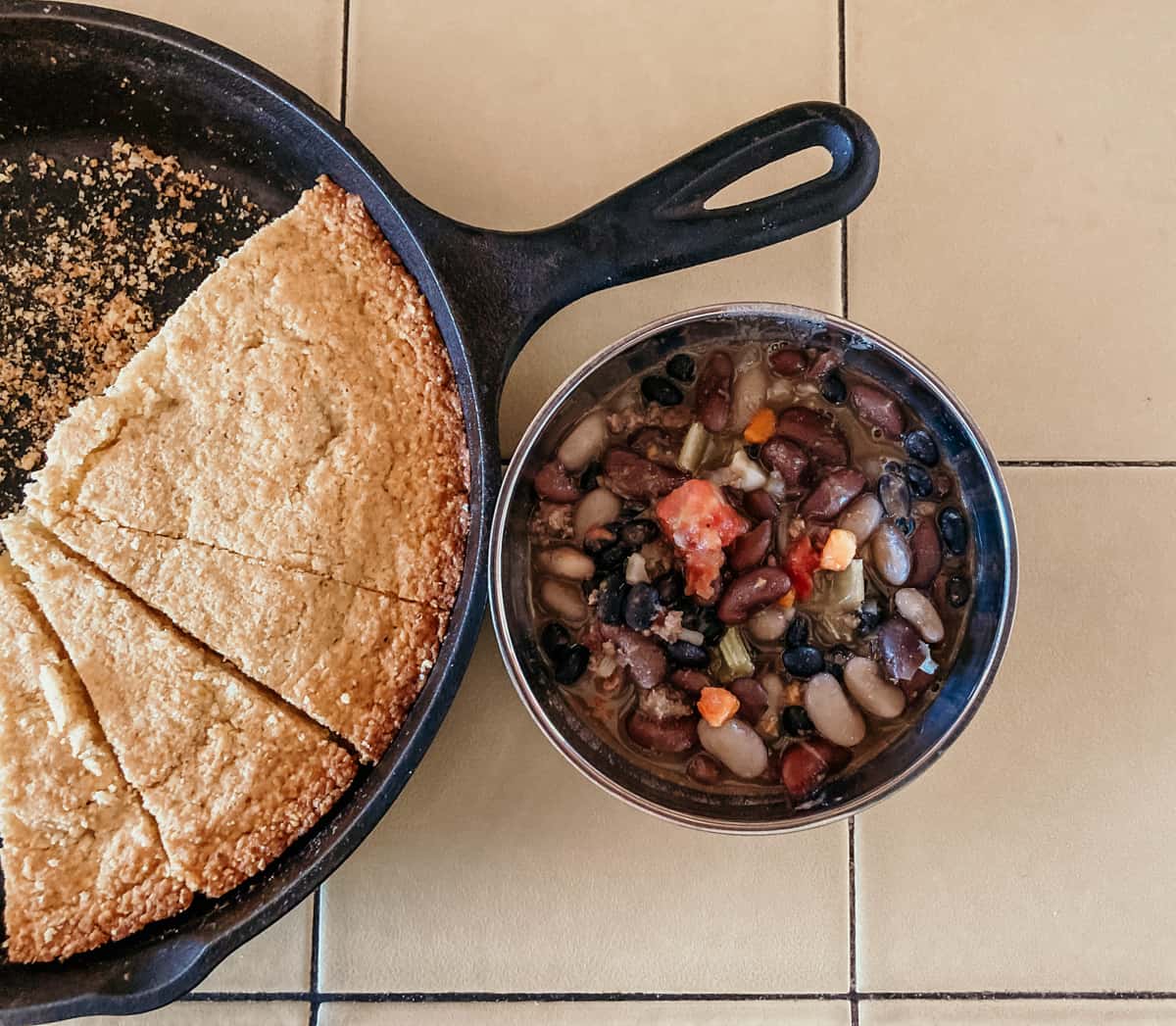
"What's notable about Indigenous recipes isn't so much what we cook or how we cook it, but our relationship with it. These spiritual connections have always been honored and reflected in ceremonies and dances, one of which is the Bean Dance, vital to the coming-of-age ceremony for Hopi children. The dance involves a hope for rain and a promise of sustenance and productivity...Recipes like the one below are more than a rustic taste of Native America; they're an aspect of spirituality, culture, and community."
- Chef Freddie Bitsoie
We're back with some more practical life in the kitchen and we couldn't be more excited. Today we're sharing our experience making three sisters bean stew and as you'll see, this is the perfect recipe for preschoolers as well as elementary learners.
Learn more about cooking with kids and soaking beans.
Disclosure of Material Connection: Some of the links in the post are “affiliate links.” This means if you click on the link and purchase the item, I will receive an affiliate commission. Amazon links are not affiliate links. You can read my full affiliate disclosure.
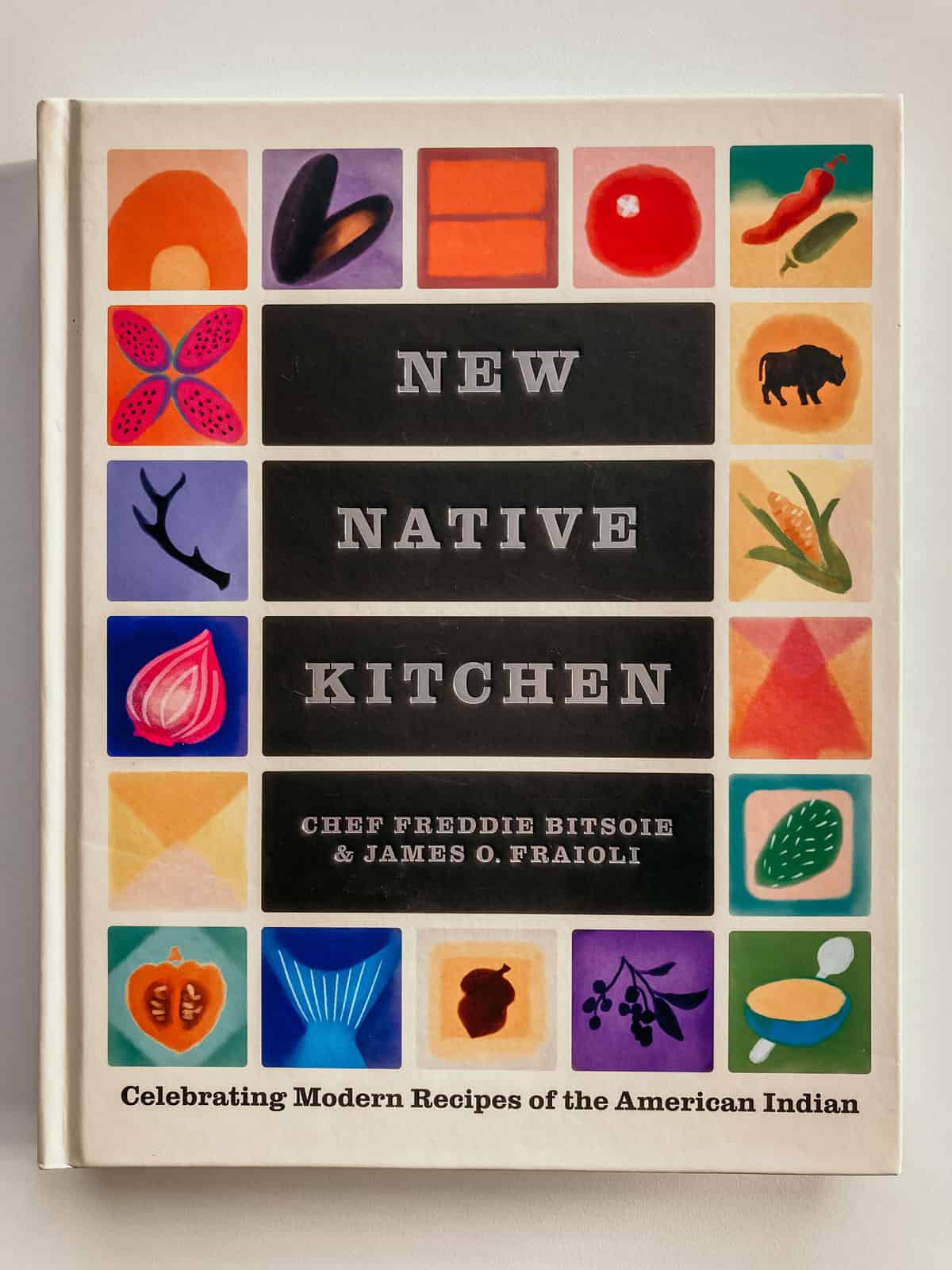
This three sisters bean stew recipe is from New Native Kitchen: Celebrating Modern Recipes of the American Indian by Chef Freddie Bitsoie and James O. Fraioli. We like it so much we've even made a free printable recipe with pictures for you to try at home. You can find it down at the bottom.
If you enjoy this recipe, you'll definitely want to try chocolate bison chili, Cuban beans and rice, Costa Rican beans and rice, refried beans, zuppa di pasta e ceci, kala, and lamb pasta bake.
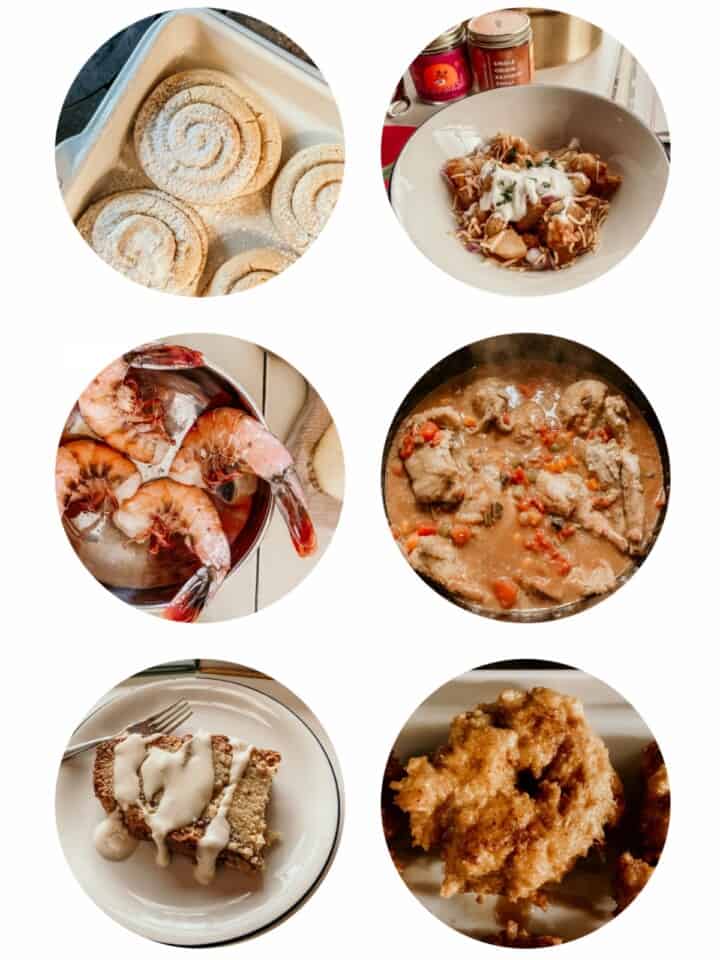
Food from Around the World: Free Cooking Lessons
Learn from some of the most talented chefs around the world!
Free Cooking Course for Families
Discover recipes for every continent! Sign up to receive free cooking lessons for the whole family. Learn from some of the most talented chefs around the world and participate in the quality practical life experiences Montessori education is known for.
Find out more about the cooking course.
Three sisters bean stew consists of three different types of beans, along with some vegetables, cooked in a flavorful broth. This dish holds much significance in Native American Cuisine. As Chef Freddie Bitsoie explains:
"Life in the desert can be difficult, but the Hopi are talented agriculturists who developed techniques for dry farming in northeastern Arizona using natural precipitation like winter snow and summer monsoon floods. They were, and still are, a people acutely attuned to changes in the soil, weather, wind, and water. These are delicate balances that the Hopi solemnly respect - and they celebrate the beauty that comes from the meditative work of living in a harsh climate...As with many Native American cultures, Hopi spirituality is connected to the food they cultivate."
- Chef Freddie Bitsoie
Substitute whatever beans you have - pinto, Great Northern, and cranberry are also recommended.
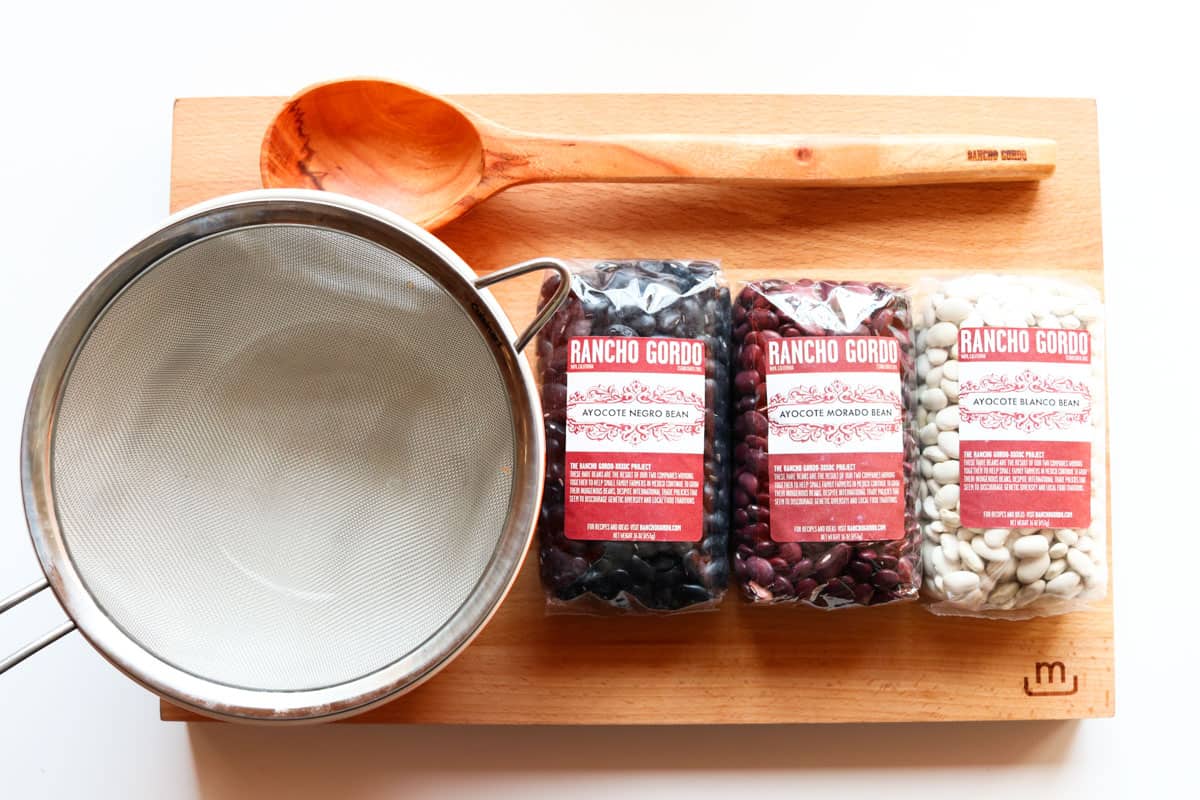
If you're looking for delicious heirloom beans of similar size that add beautiful color to your dish, you're looking for Ayocote Negro, Ayocote Morado, and Ayocote Blanco beans.
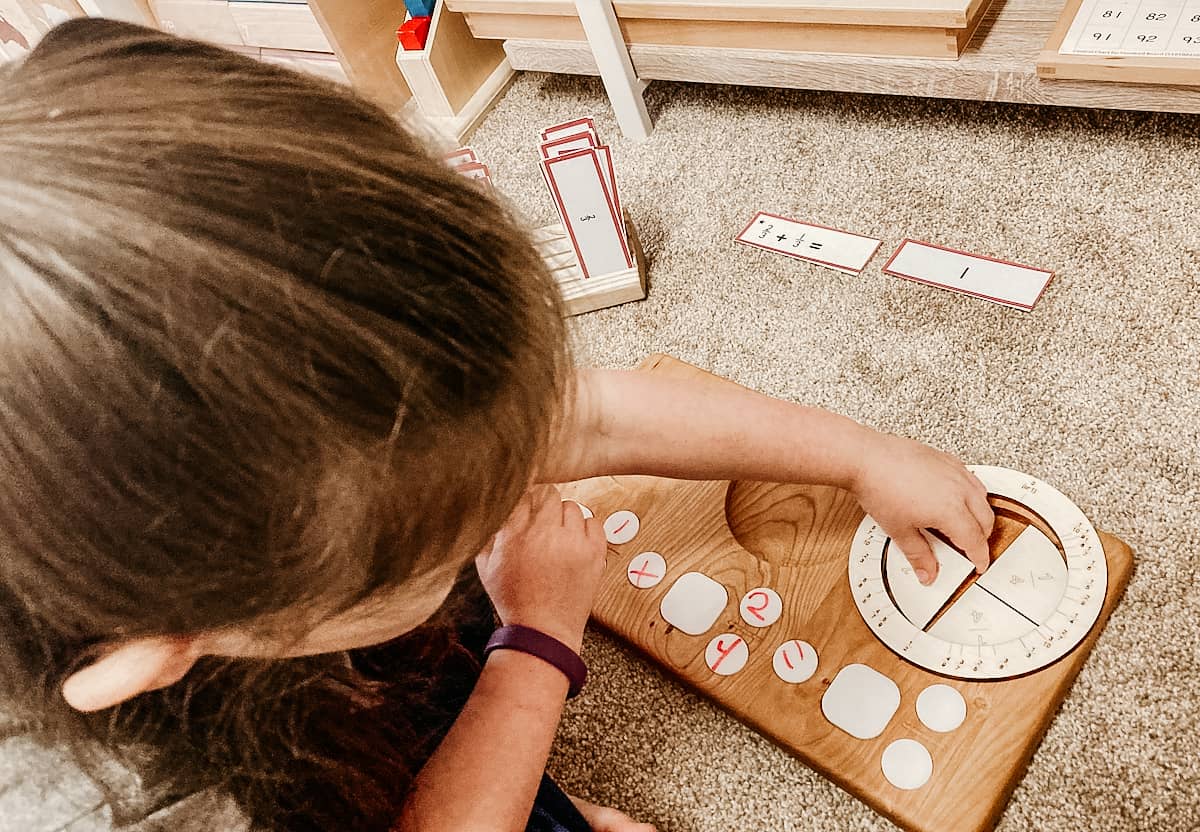
Canned beans have more sodium but they can be rinsed prior to use in order to cut down on the amount of sodium.
As far as taste goes, you may notice that when cooking dried beans, the result is more texture and flavor than their canned counterpart.
Both dried and canned beans have a long shelf life.
Dried beans have more nutritional value than canned beans, but canned beans still have a lot to offer.
Helpful Bean Conversions
When considering the amount of beans to use for this recipe, you will want to account for the difference in weight between dried beans vs canned beans. In order to do that, it's also helpful to know the relationship between canned beans and cooked beans.
In general, dried beans are ⅓ of the weight of cooked beans. Since this recipe calls for 1 cup of cooked kidney beans, that is the same as ⅓ cup of dried kidney beans.
Also, in general, 1 15-ounce can of beans is equal to 1 ½ cups (12 ounces) of cooked beans, drained. This means that 10 ounces or ⅔ of a 15-ounce can of kidney beans can be used for this recipe.
Using this information, if you were to compare the cost of dried beans vs canned beans at your local store, you can see that dried beans will also cost less per serving.
We'll show you how to cook dried kidney beans, cannellini beans, and black beans in this recipe. However, if you're using canned beans, you can start with step 8 and then skip to step 11 to finish the recipe.
Many recipes include opportunities to reinforce knowledge of fractions. The Mirus Toys Fraction Manipulation Board pictured above is an excellent hands-on material for learning about fractions. We use this board to explore fractions in-depth during the elementary years along with printables such as these Montessorikiwi Fraction Addition Tickets.
Children may begin exploring fractions with food items such as apples, oranges, berries, or pie at early ages. In addition, we find the Montessori Fraction Skittles followed by this Montessorikiwi Fraction Sorting Extension to be valuable materials for the preschool and kindergarten years.
Get 16% off your purchase from Montessorikiwi.
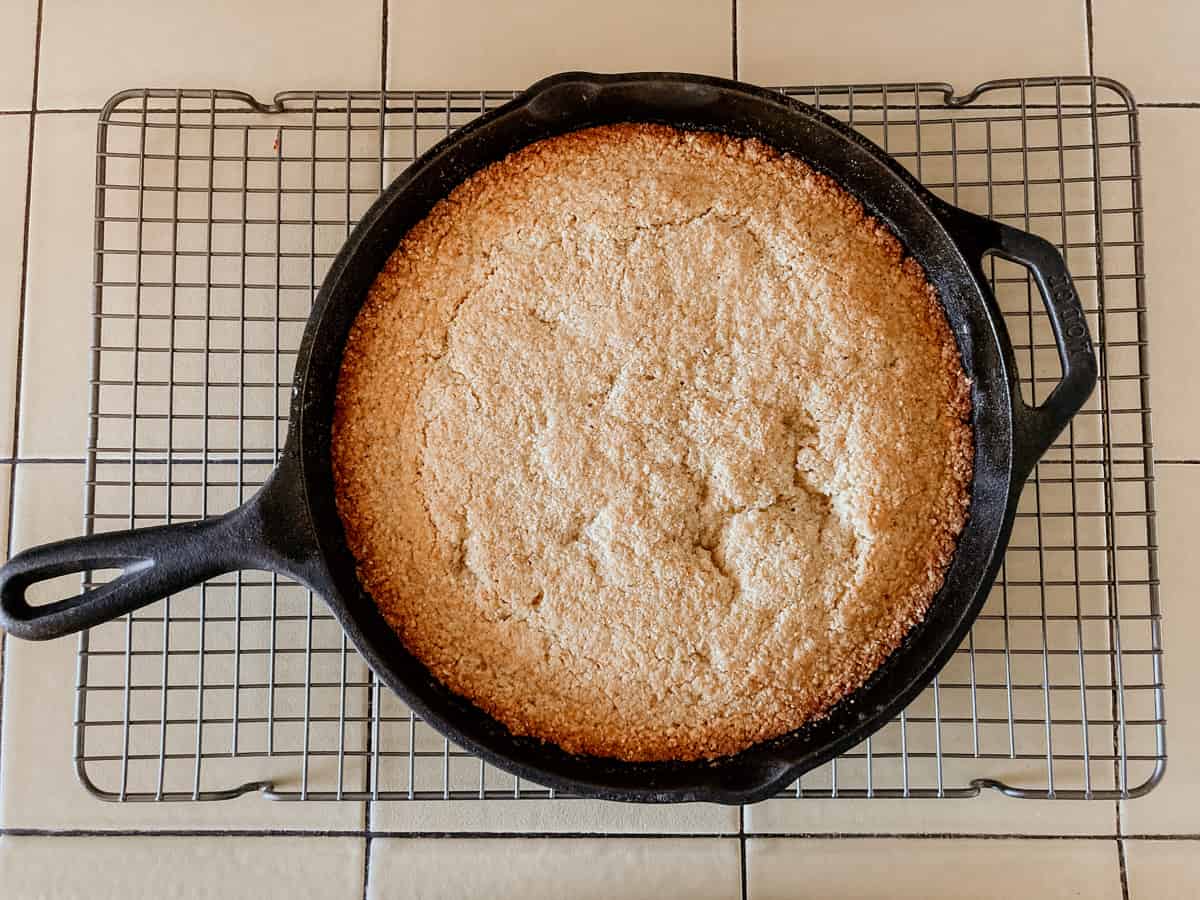
Interested in What to Serve with Three Sisters Bean Stew?
This einkorn cornbread is an excellent pairing with the three sisters bean stew recipe. It's easy to make and the combination of einkorn and cornmeal tastes delicious. Our kids especially enjoyed dipping the cornbread into the stew.
Chef Freddie Bitsoie recommends serving this three sisters bean stew with grilled or roasted meats or over wild rice. You can also add roasted chilies (recipe included in the cookbook) for heat.
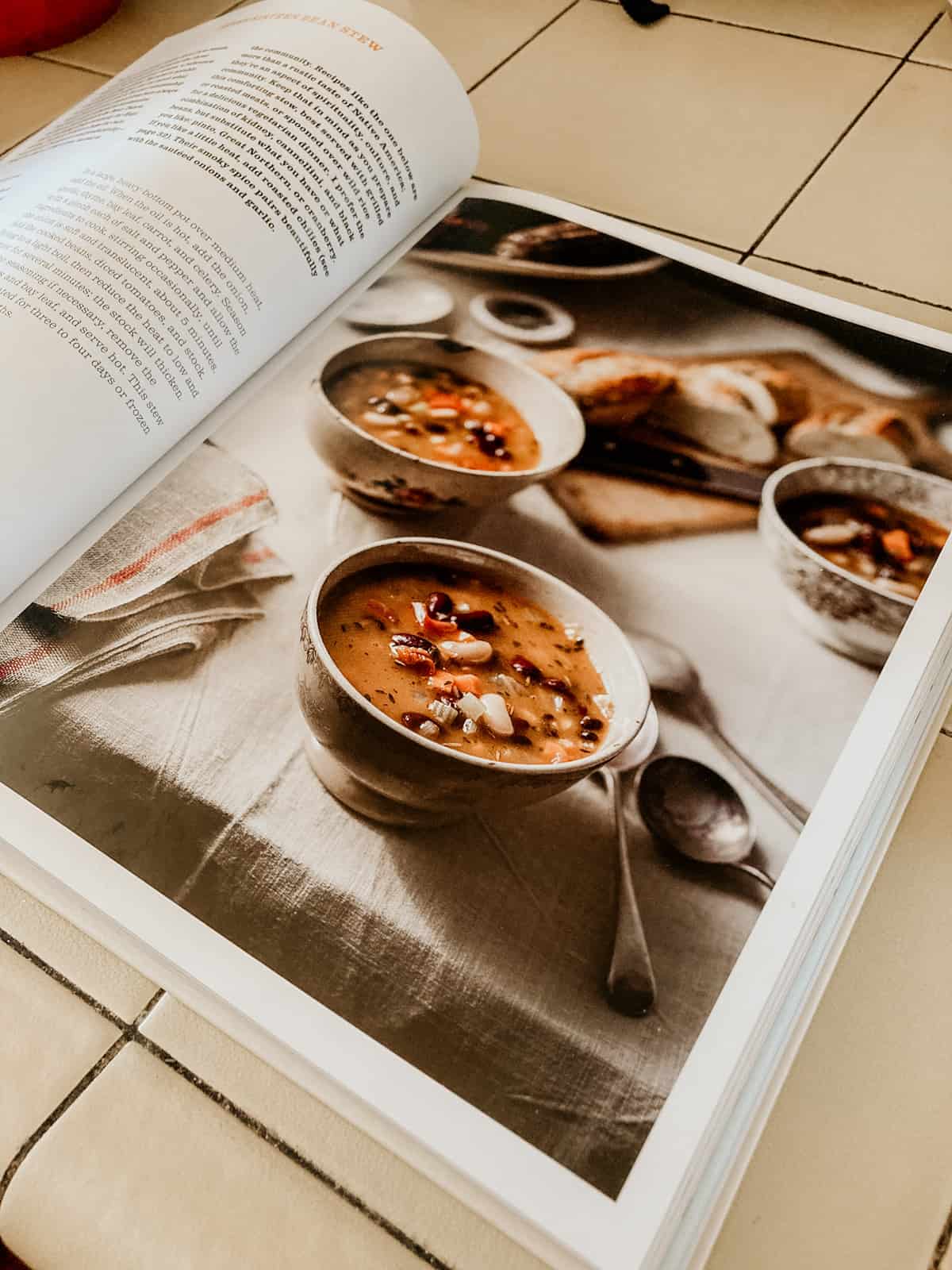
Three Sisters Bean Stew Recipe
This three sisters bean stew recipe is easy enough for preschoolers to make, with assistance as needed. There are many opportunities for sensorial, math, and science experiences while making this delicious recipe.
While you can cook the beans more quickly using an instant pot, we find that this method is also simple and requires no special equipment.
If you like this recipe, try this stewed rabbit.
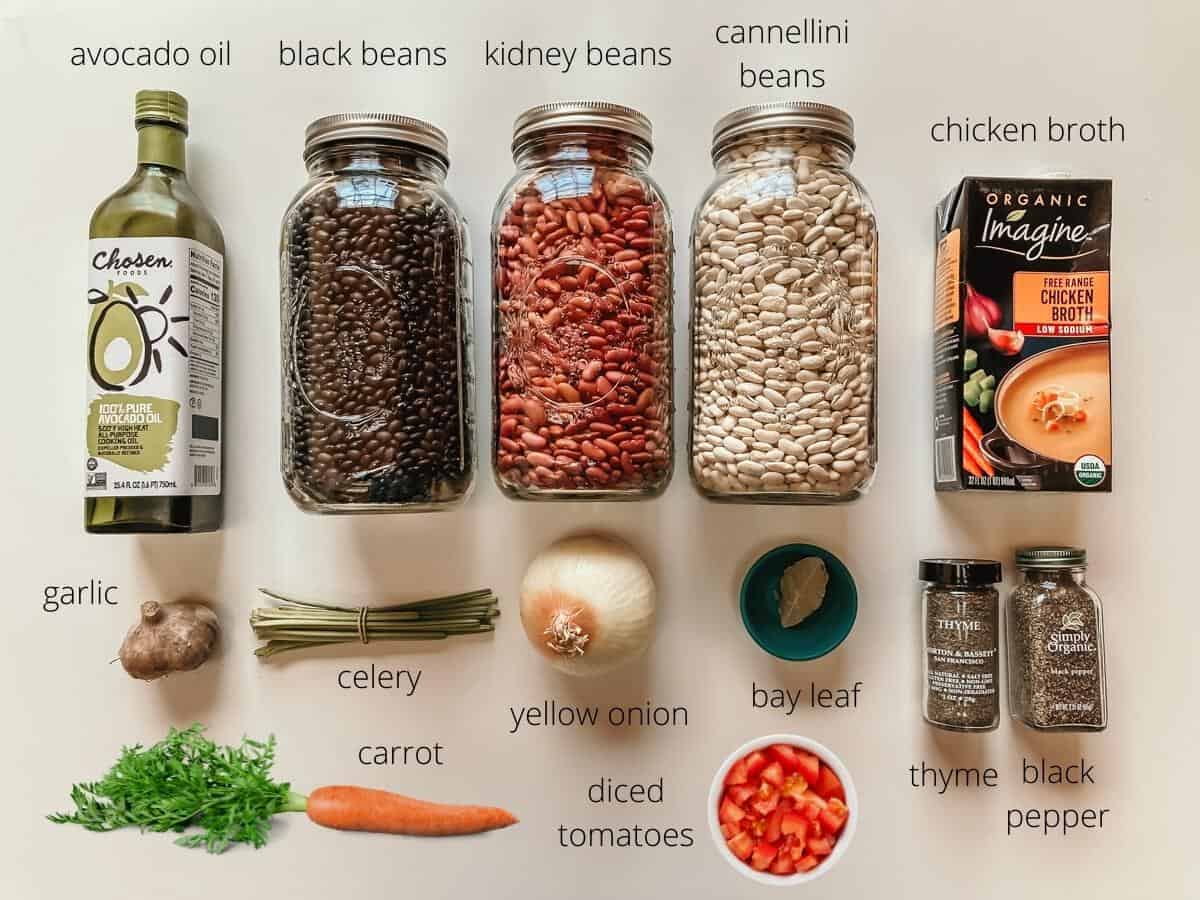
Ingredients
- Avocado Oil
- Onion
- Garlic
- Thyme
- Bay Leaf
- Carrot
- Celery
- Salt
- Pepper
- Kidney Beans or Ayocote Morado
- Cannellini Beans or Ayocote Blanco
- Black Beans or Ayocote Negro
- Diced Tomatoes
- Chicken or Vegetable Stock or Broth
- Water
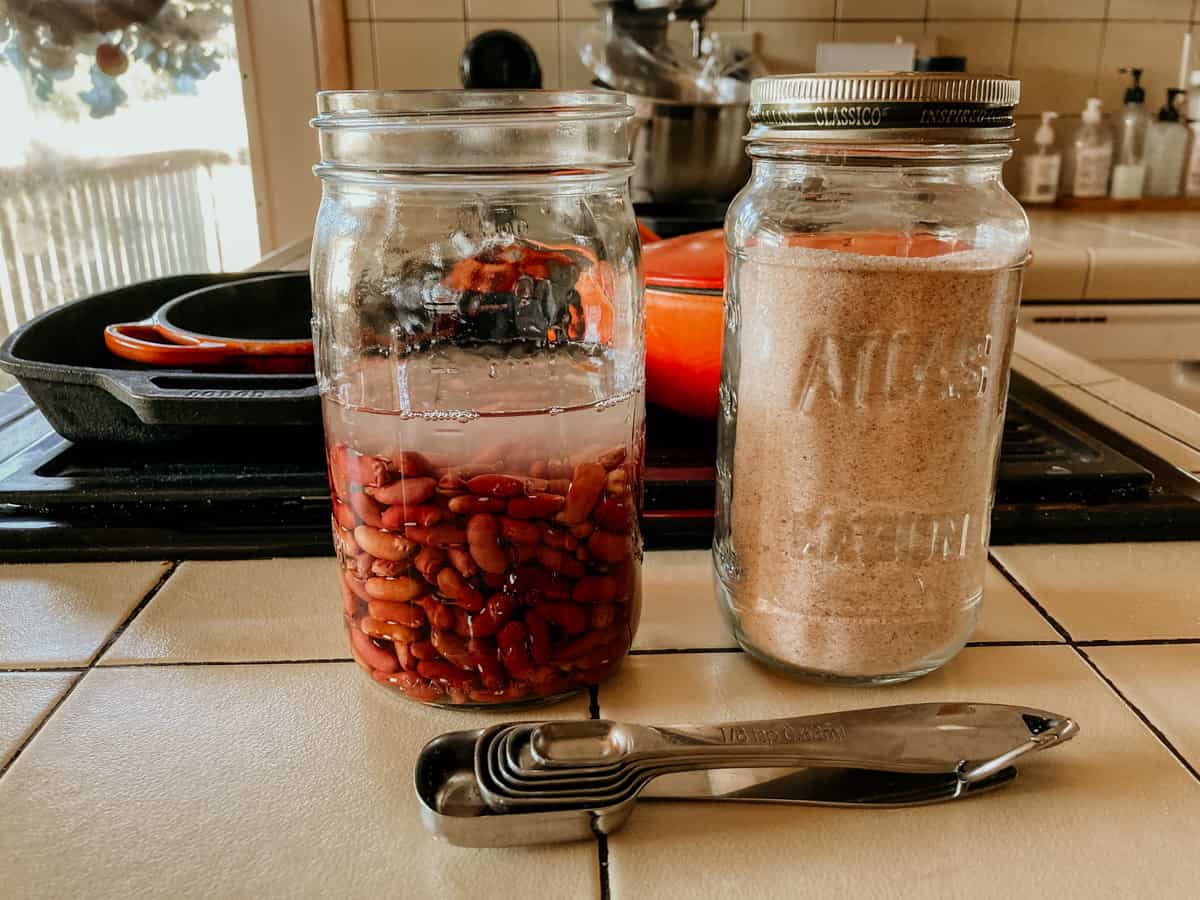
1. Soak the Kidney Beans
Wash your hands with soap and water.
Weigh the kidney beans needed for this three sisters bean stew using a kitchen scale (see Step 3 for details). Place the kidney beans in a mason jar or bowl and add enough water to cover the beans. Next, add 1 teaspoon of salt and stir.
Soak the kidney beans for 5-8 hours. We soaked them for 6. Check periodically to make sure all of the beans are submerged. Add additional water as needed.
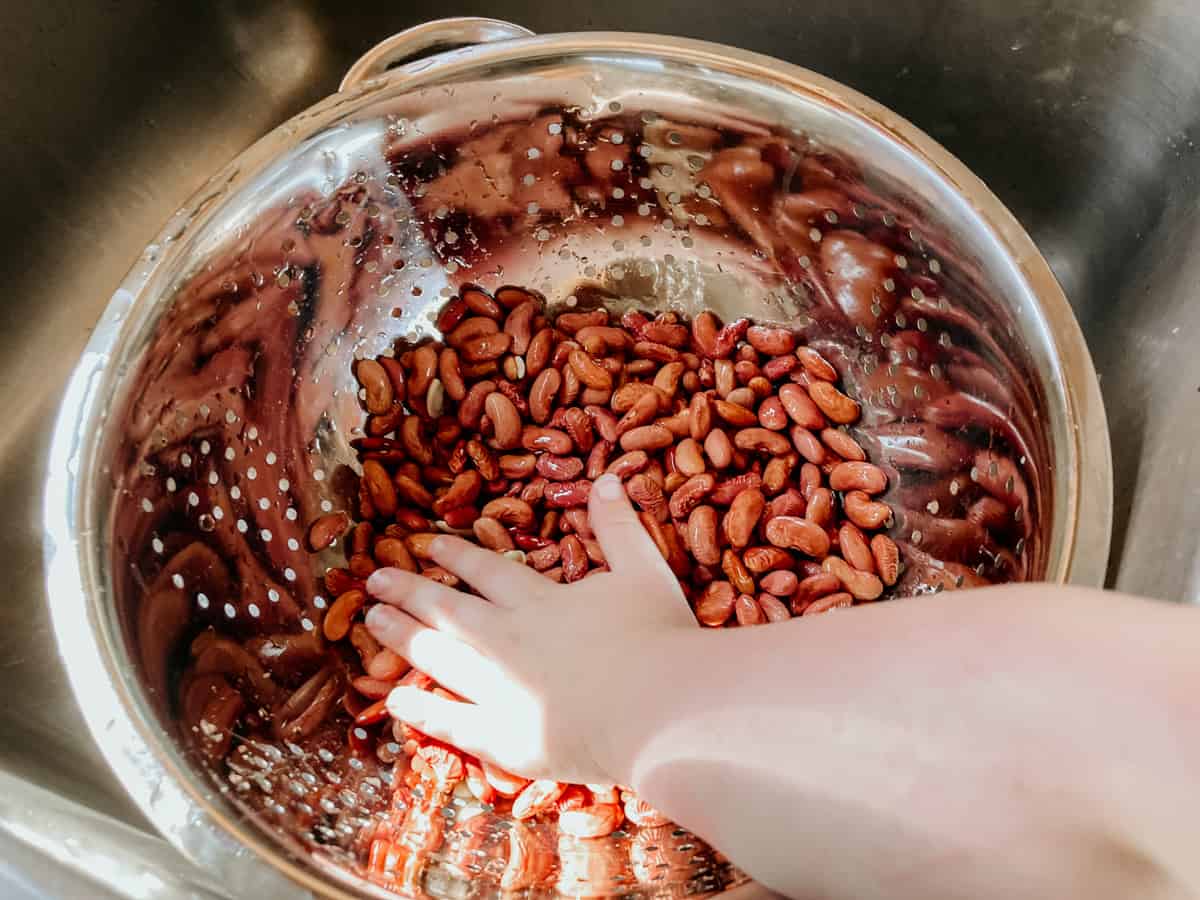
2. Drain the Water
Wash your hands before returning to the kidney beans. Pour the contents of the mason jar into a colander to drain the water.
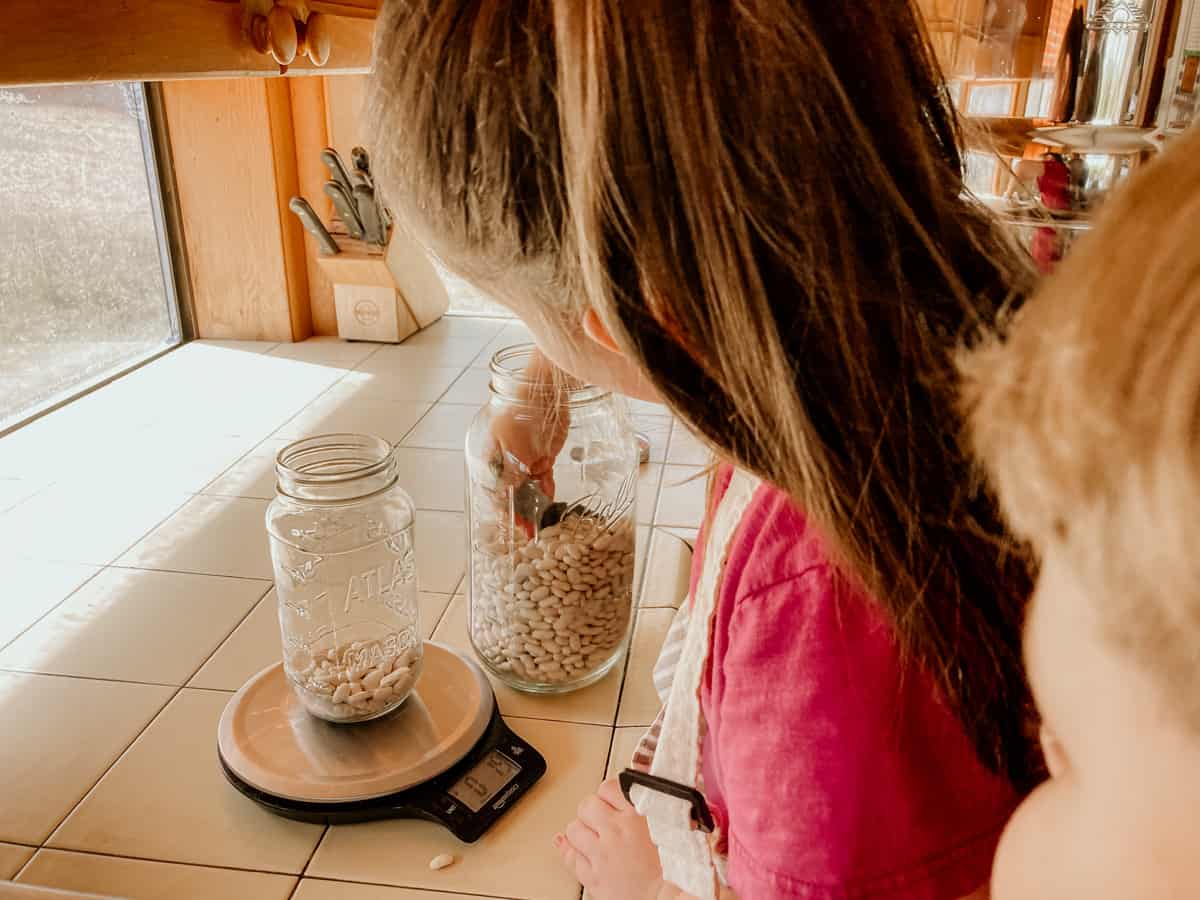
3. Weigh the Cannellini Beans
Embrace the math. There are lots of opportunities for math in the kitchen and kids love using a kitchen scale to practice math skills. The unit and tare buttons always add interest to the experience.
This is an excellent time to introduce or review any conversions needed. Most kitchen scales include conversions that kids can explore as they weigh ingredients. We like using jars with labels for measuring liquids.
For this experience, we're using mason jars to hold and rinse the beans only. Mason jars allow you to measure by volume (best for liquids). We're using the kitchen scale to determine the amount of beans needed by their weight.
Looking for an activity to explore the difference? You can use the approach we're using and compare the value on the scale to the value on your labeled jar. Kids can then use critical thinking skills to analyze the results. This type of experiment can be completed with a variety of ingredients to extend the learning.
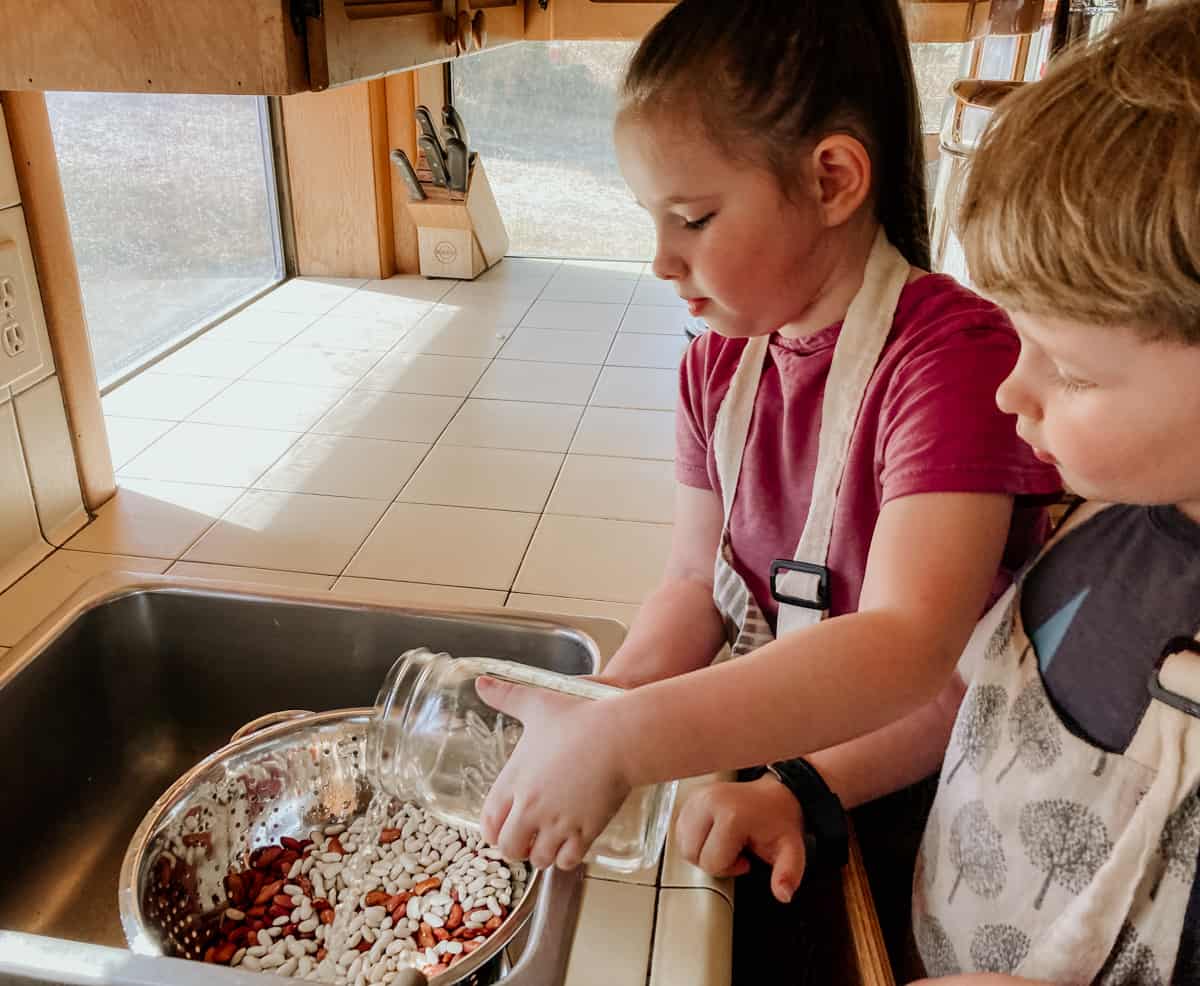
4. Rinse the Kidney Beans & Cannellini Beans
Rinse the beans with water.
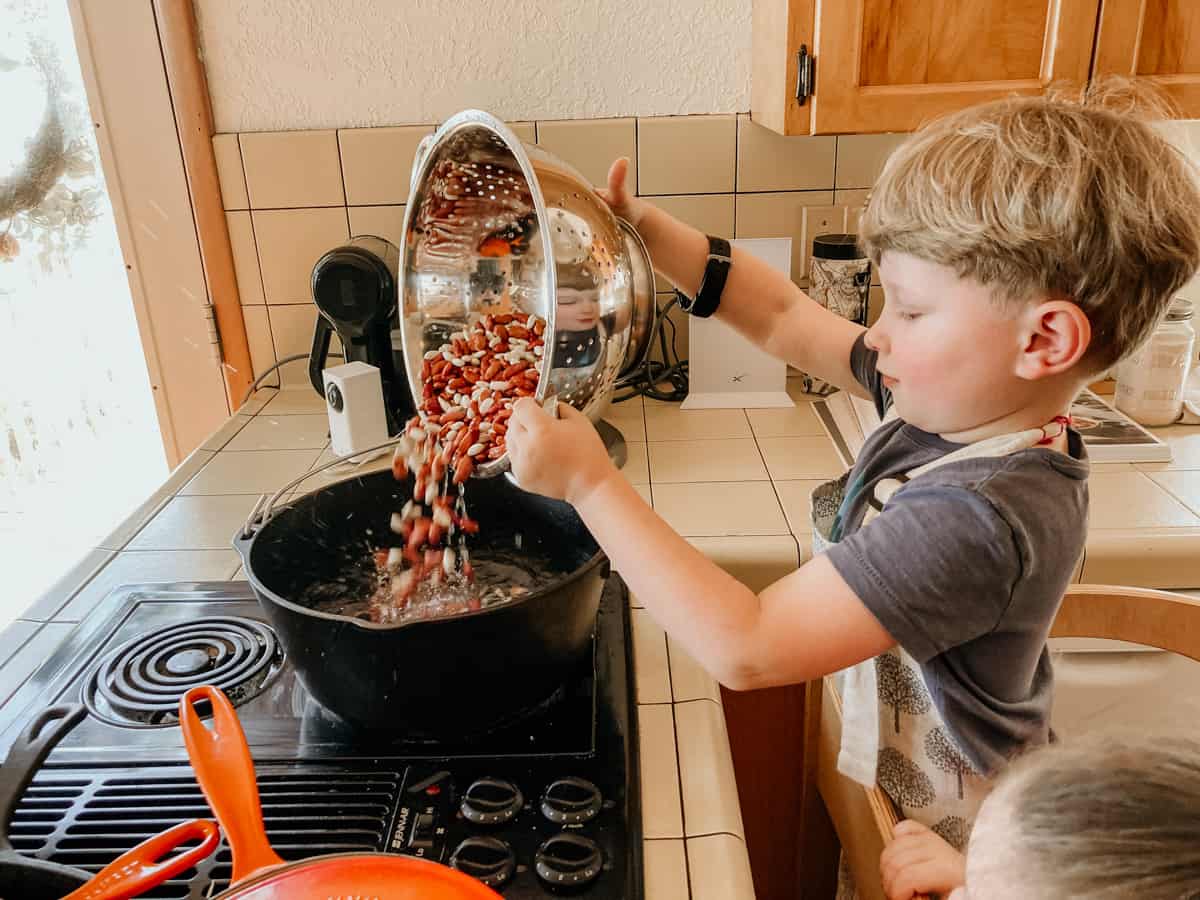
5. Transfer the Kidney Beans & Cannellini Beans to a Pot
Transfer the uncooked kidney beans and cannellini beans to a large pot or dutch oven ½ filled with water.
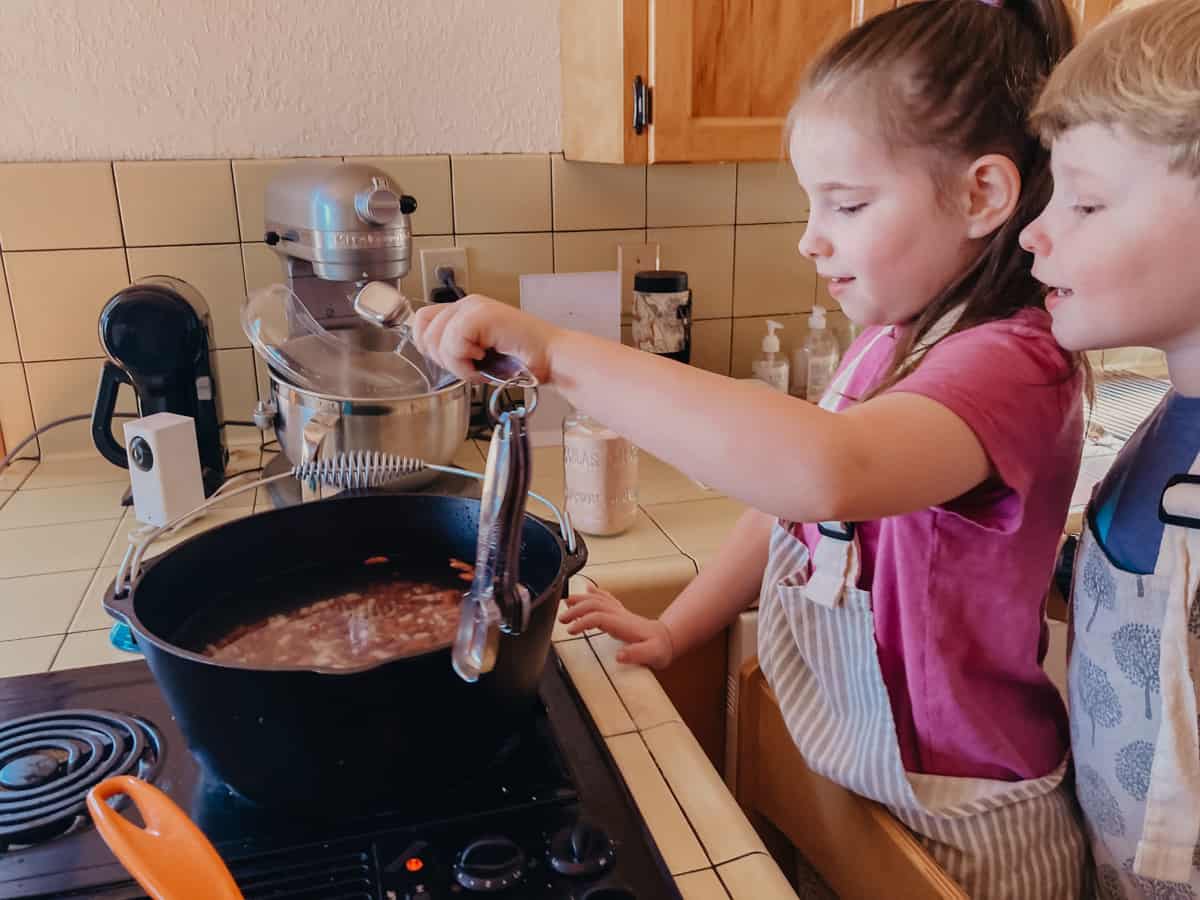
6. Add Salt to the Pot
Add 1 teaspoon of salt to the pot and stir.
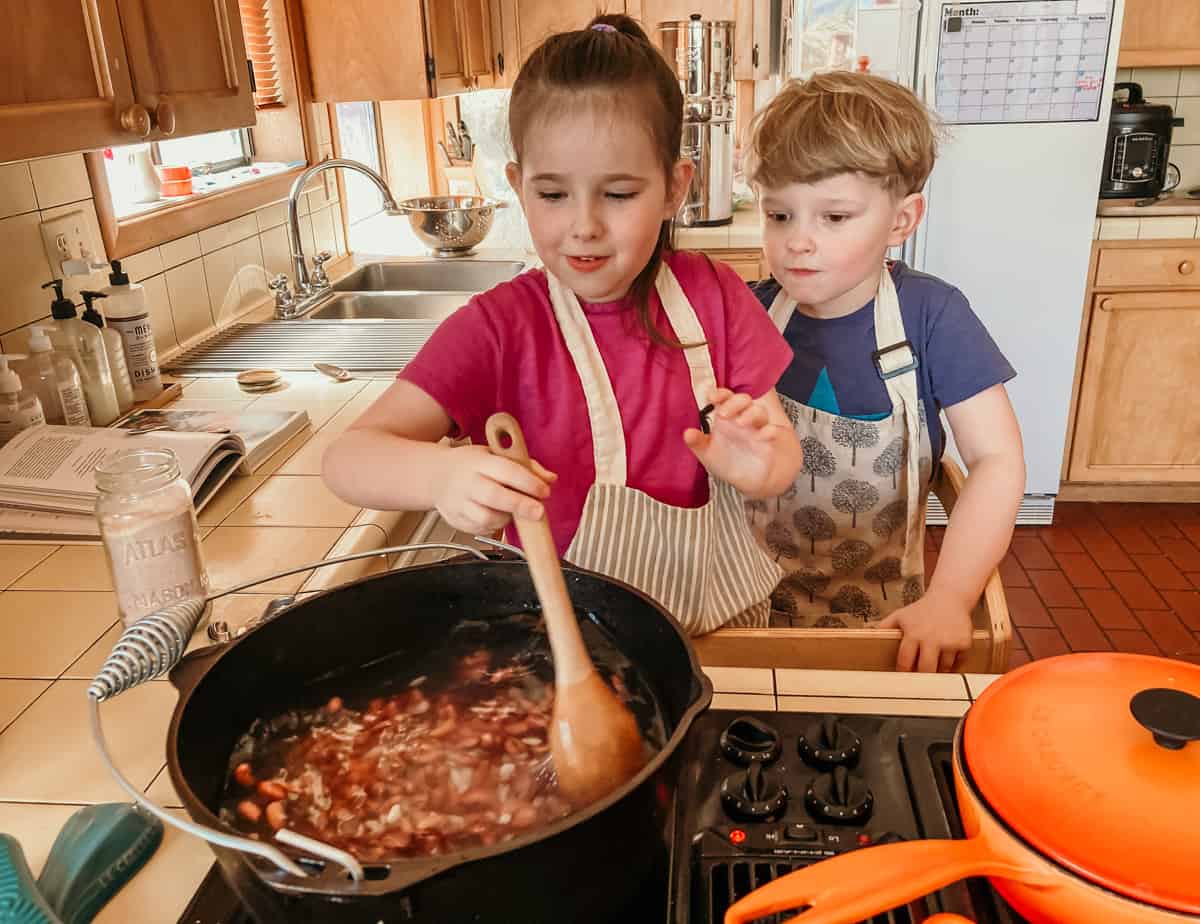
7. Cook the Beans for the Three Sisters Bean Stew Recipe
Turn the stove on high. Bring the beans to a boil. Once the water is boiling, turn the stove down to low and simmer. Place the cover on the pot. Cook for 45 minutes. Stir occasionally.
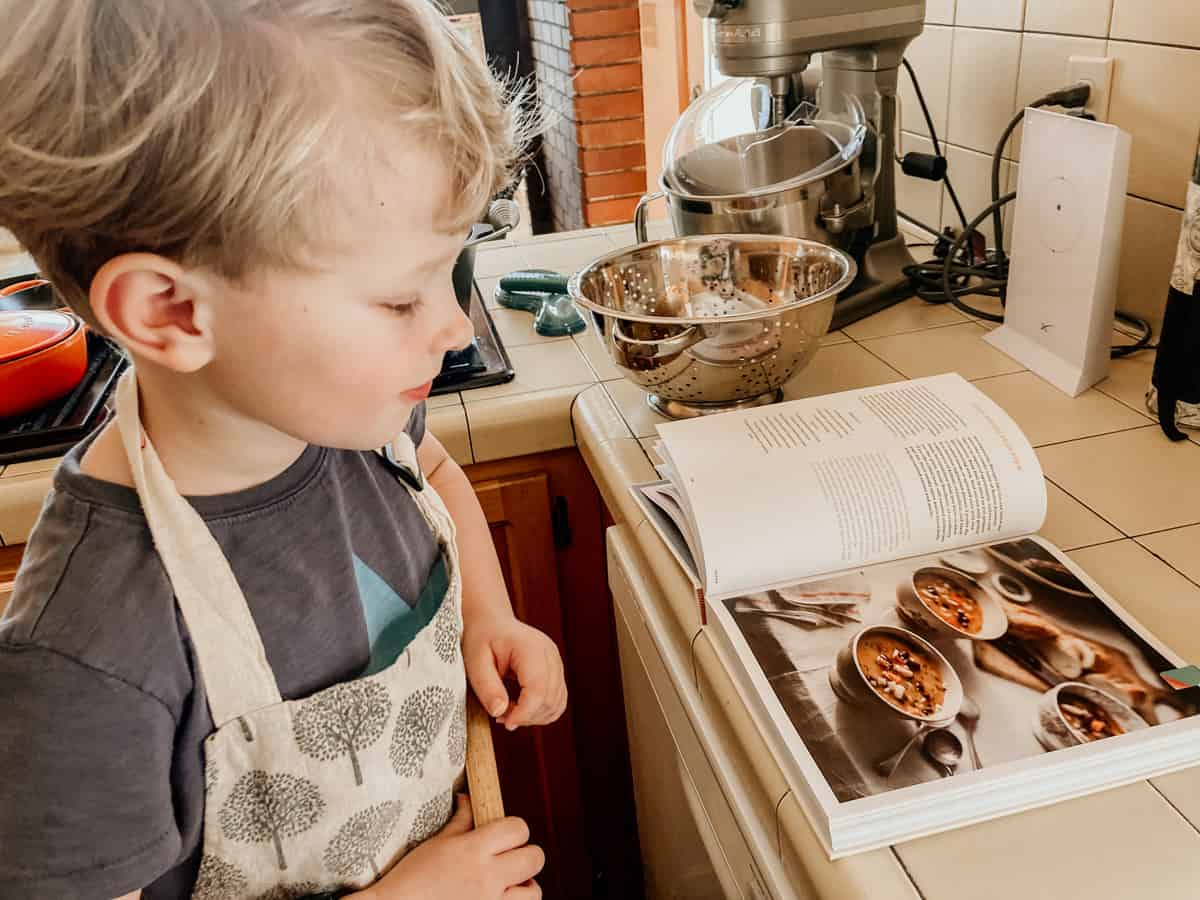
This is a great time to explore the cookbook a bit further. Our kids enjoy the pictures and read more about Hopi culture before moving on to practicing their knife skills.
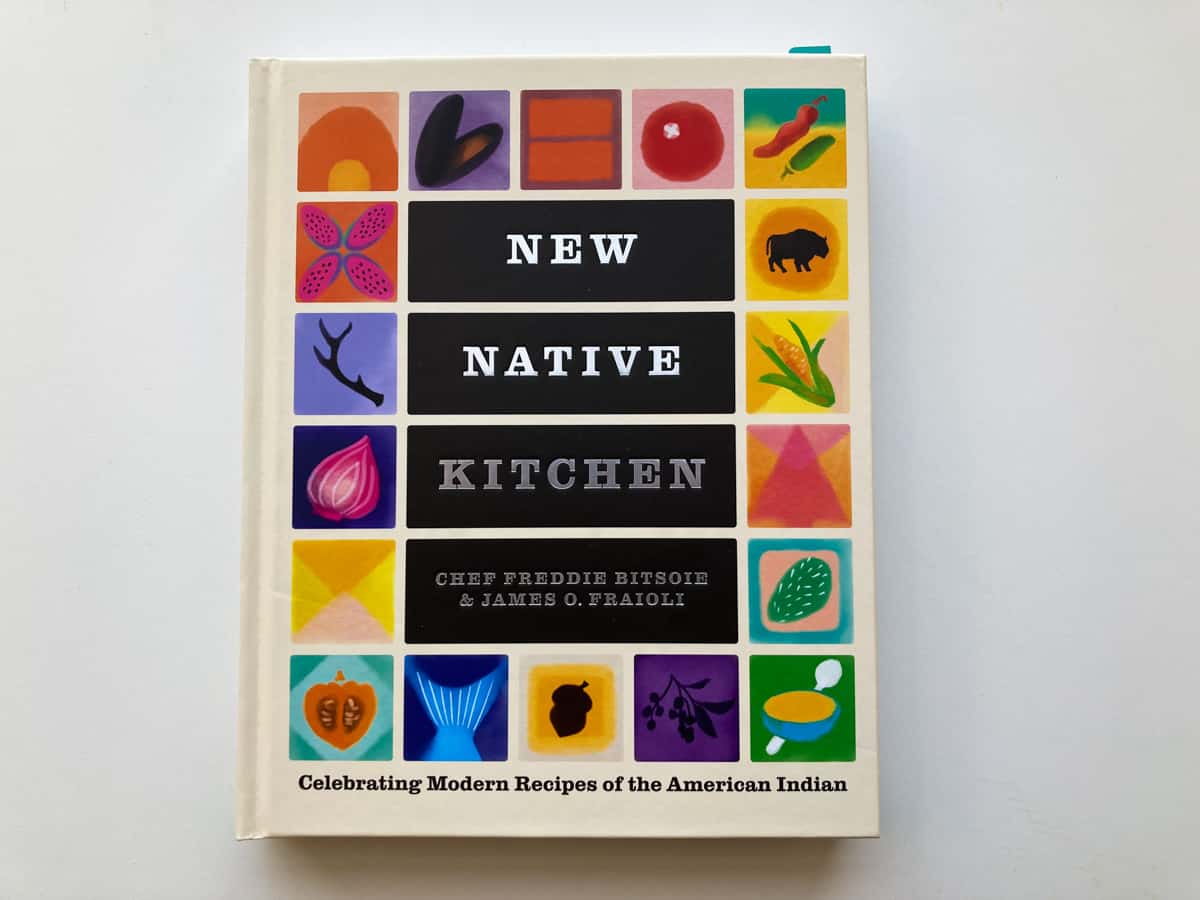
Want to learn more about the Indigenous roots of American cuisine? New Native Kitchen shares an in-depth look at Native American culture and cuisine with 100 Indigenous recipes to enjoy.
This bread pudding is another delicious recipe from the same cookbook.
Family & Kids' Cooking Resources
Beautiful & diverse cooking resources for you!
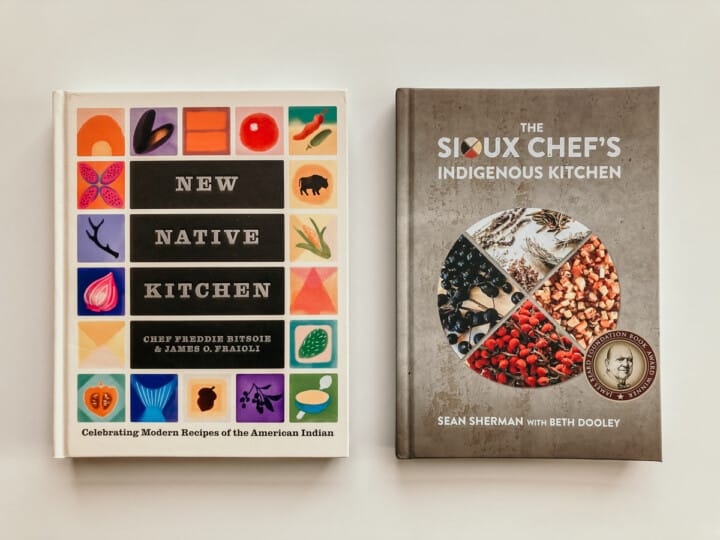
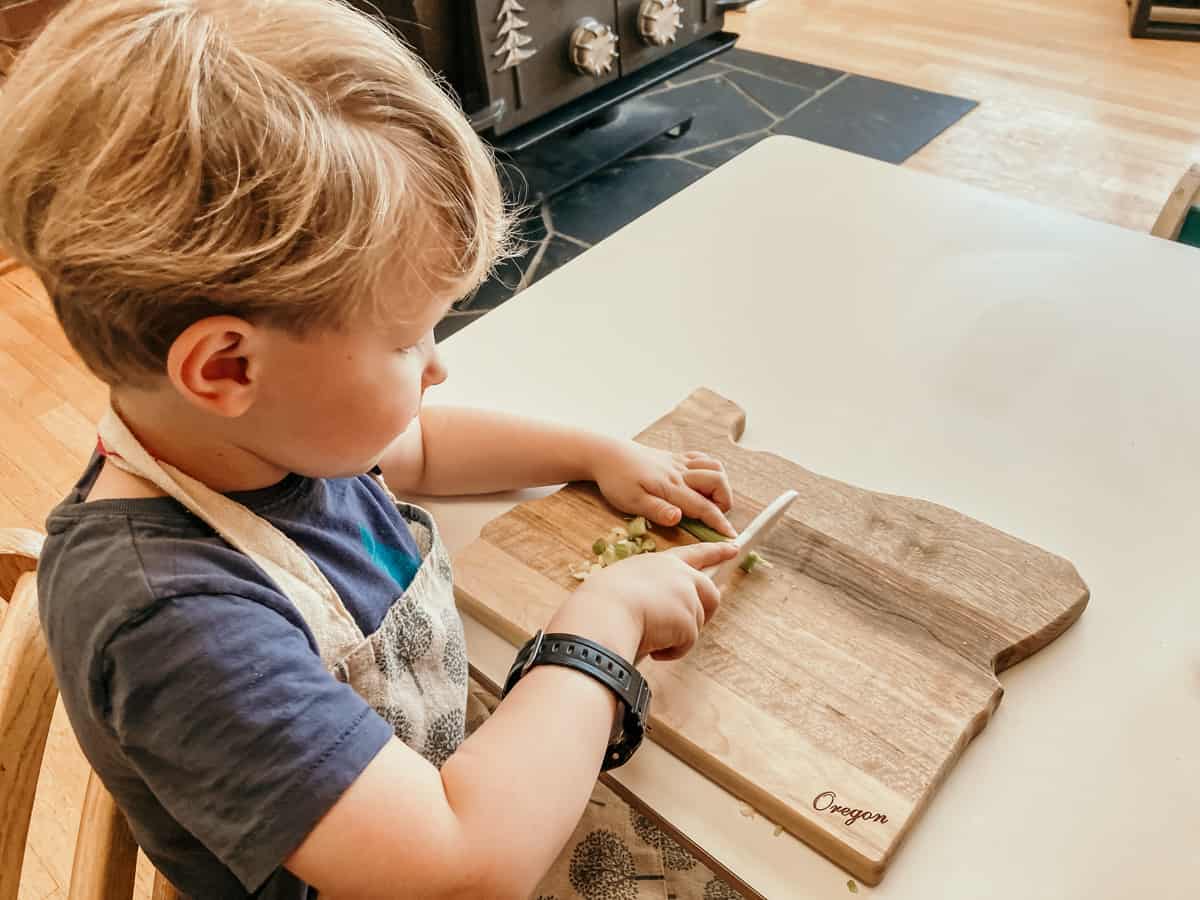
8. Chop the Vegetables
If you're using canned beans for this three sisters bean stew recipe, you can start here and then skip to step 11 to finish the recipe.
Peel the garlic. Chop the onion, garlic, carrot, and celery. Now is also a great time to dice the tomatoes if they're not already. Place the tomatoes in a separate bowl.
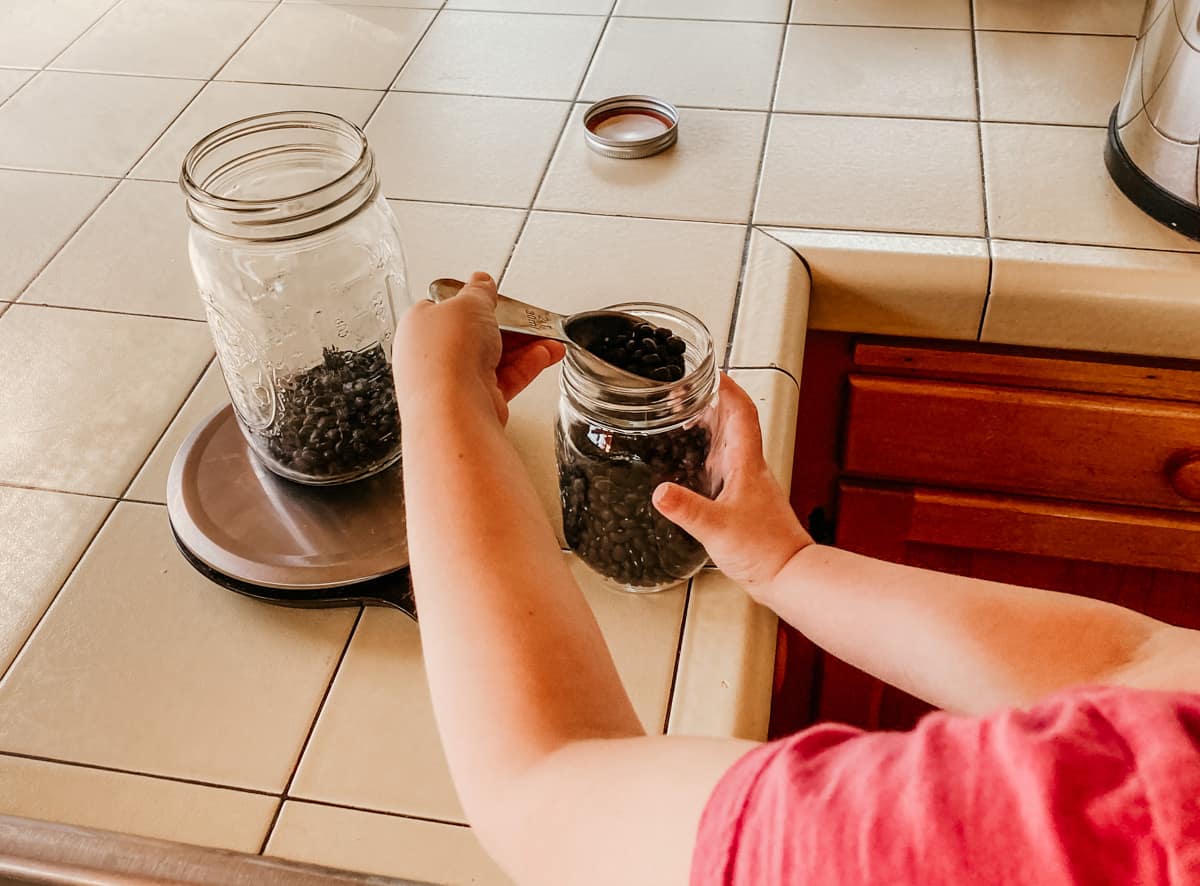
9. Repeat Steps 3-5 for the Black Beans
Once the kidney and cannellini beans have cooked for 45 minutes, it's time to work with the black beans.
Weigh, rinse, and transfer the black beans to the large pot containing the kidney beans and cannellini beans. Cook all three varieties of beans together for 45 minutes or until tender.
So that's a total cook time of 90 minutes for the kidney beans and cannellini beans.
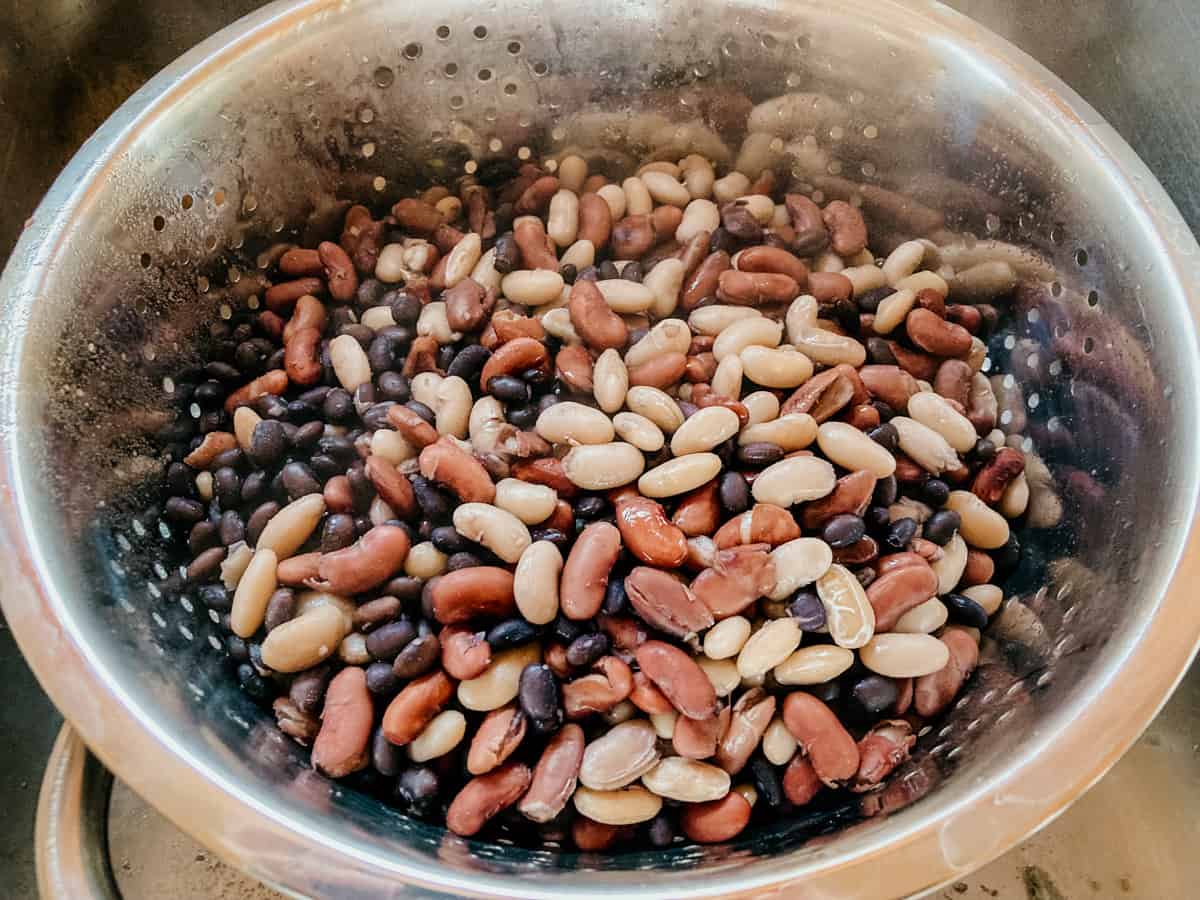
10. Drain the Water
Pour the contents of the pot into a colander to drain the water. You will most likely assist with this step if not complete this step for the child.
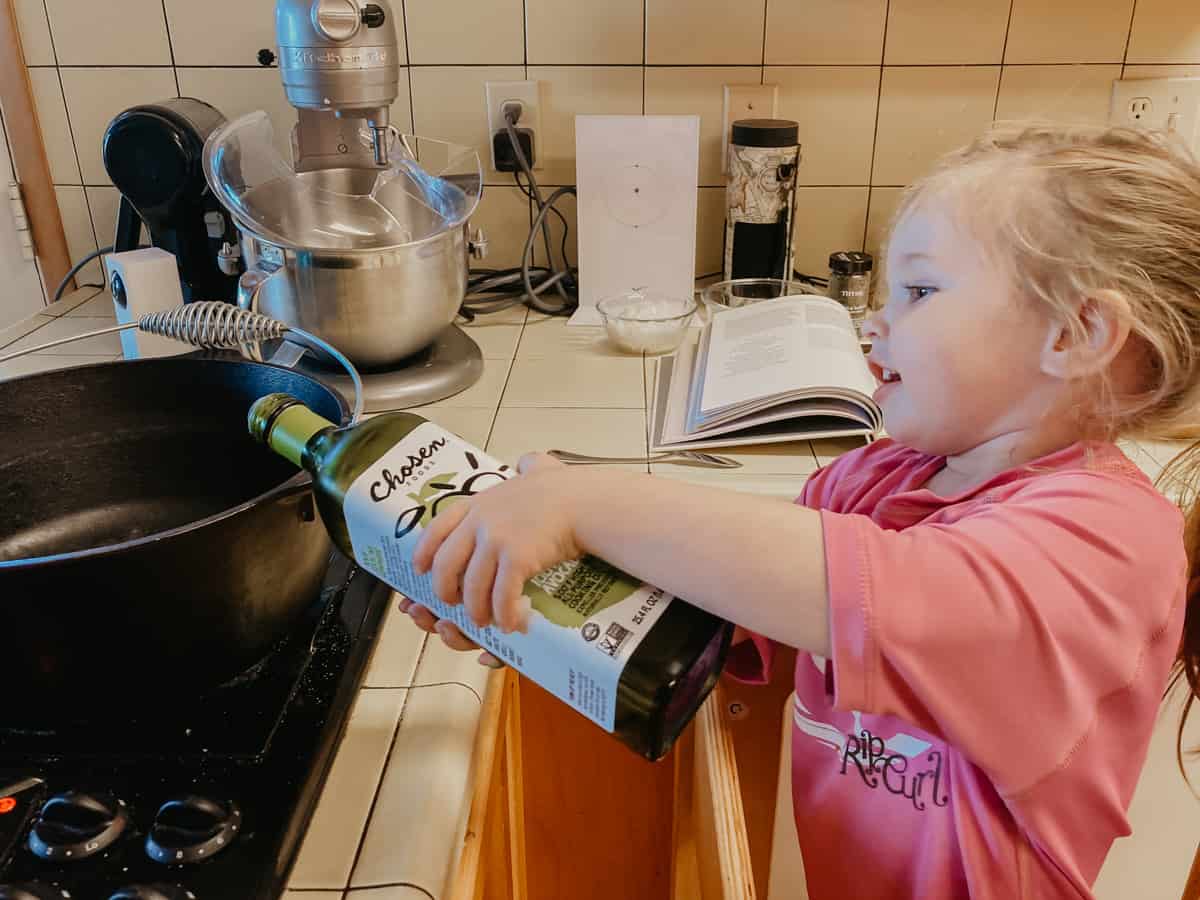
11. Add Avocado Oil to the Pot
Change the temperature of the stove to medium. Add the oil. When the oil is hot, proceed to the next step.
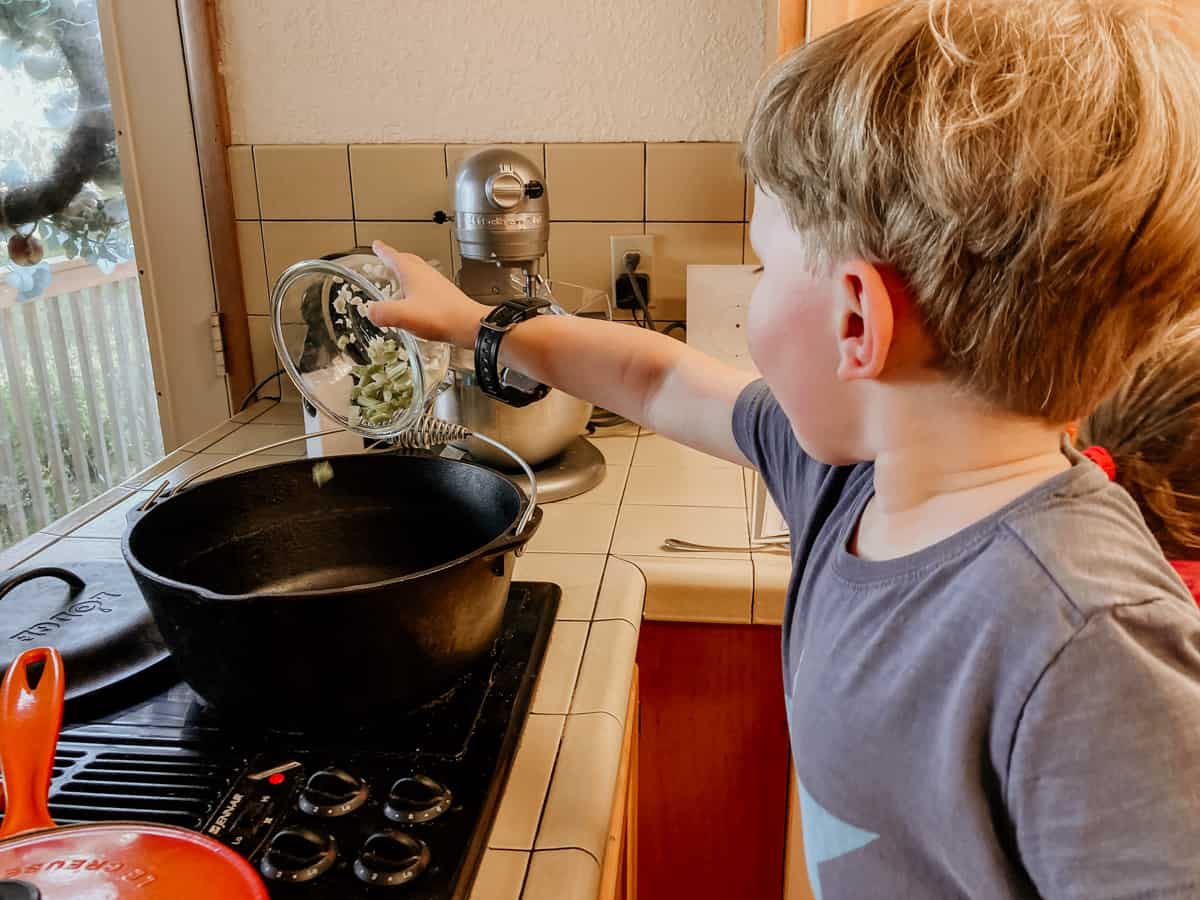
12. Add the Chopped Vegetables
Add the onion, garlic, bay leaf, carrot, and celery to the pot. Stir as needed.
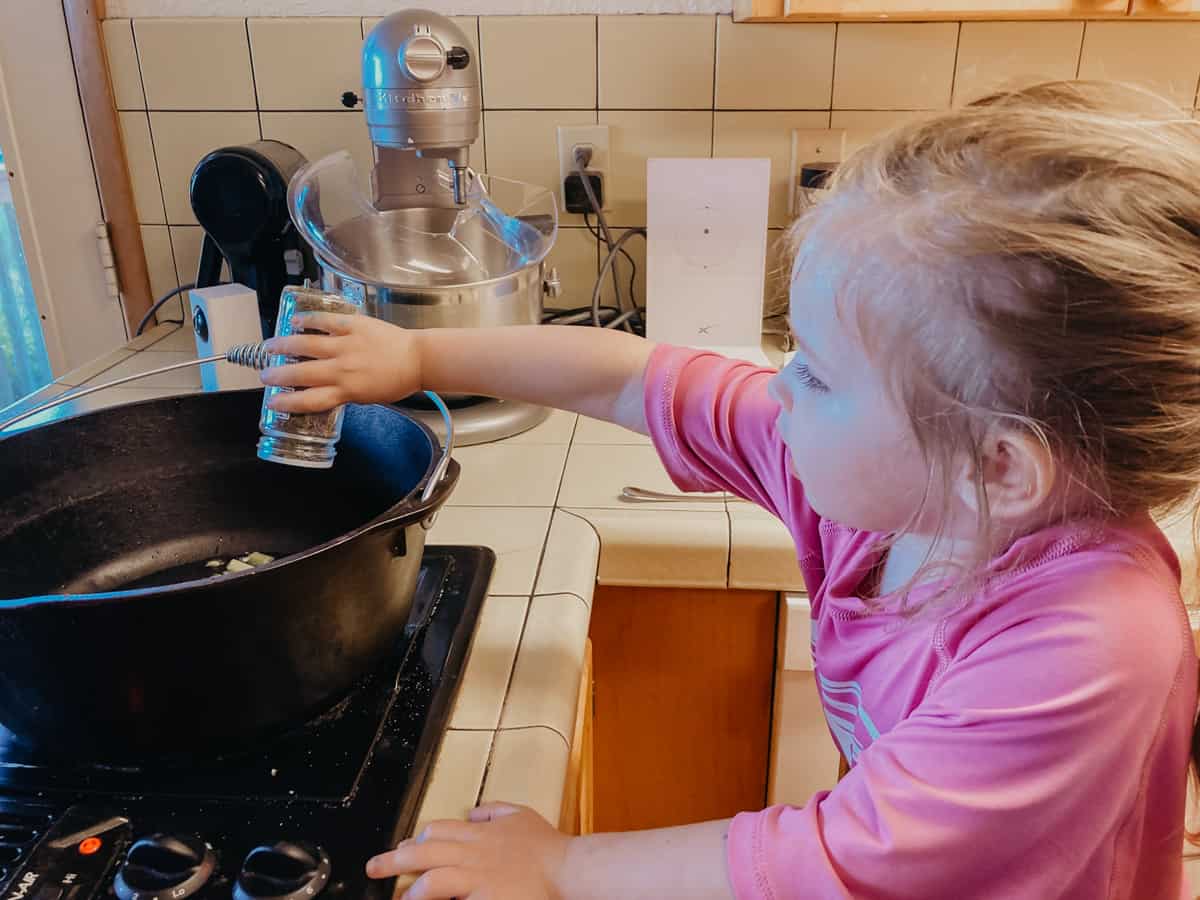
13. Add Seasoning to the Pot
Add thyme, salt, and pepper. Stir and cook for about 5 minutes, or until the onion is soft and translucent.
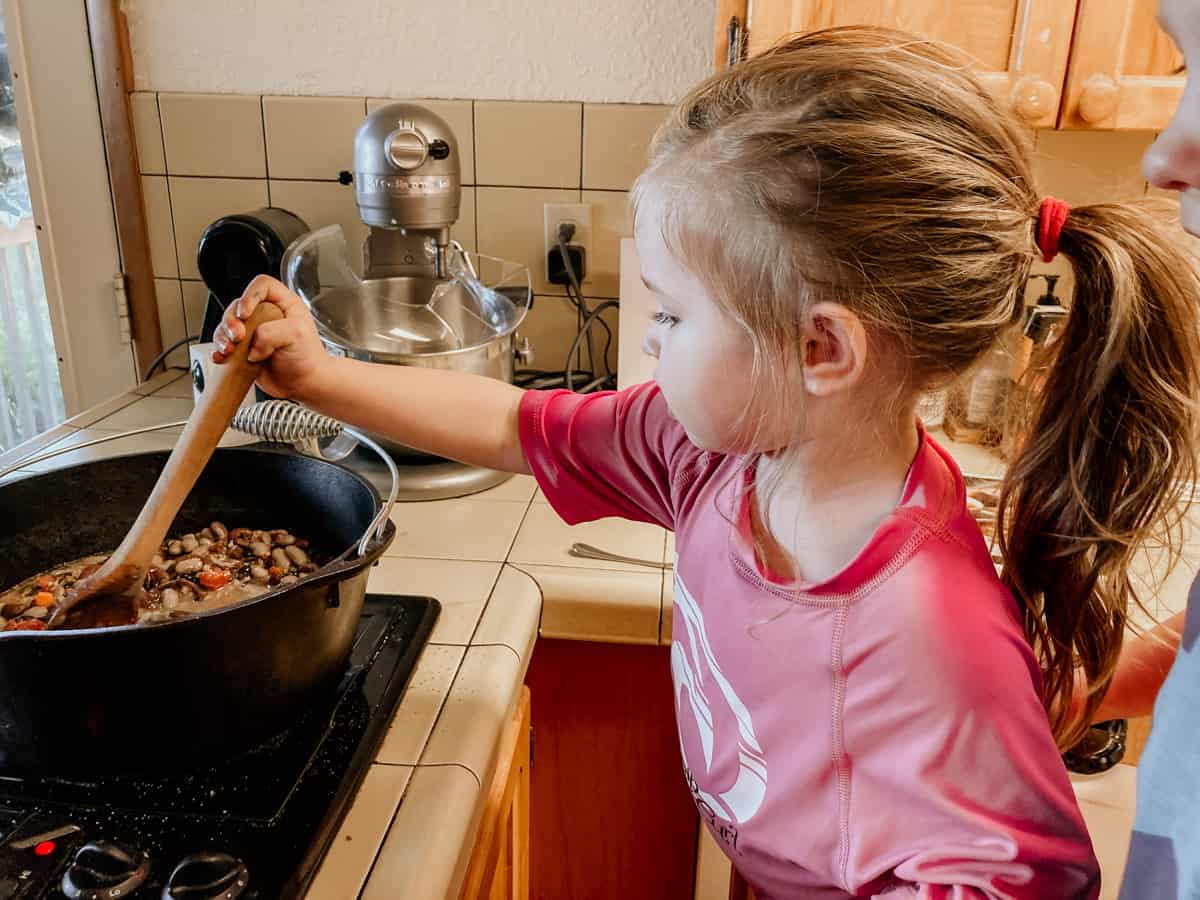
14. Add the Beans, Tomatoes, & Chicken Stock to the Pot
Add the cooked beans, diced tomatoes, and chicken stock to the pot. Give it a stir.
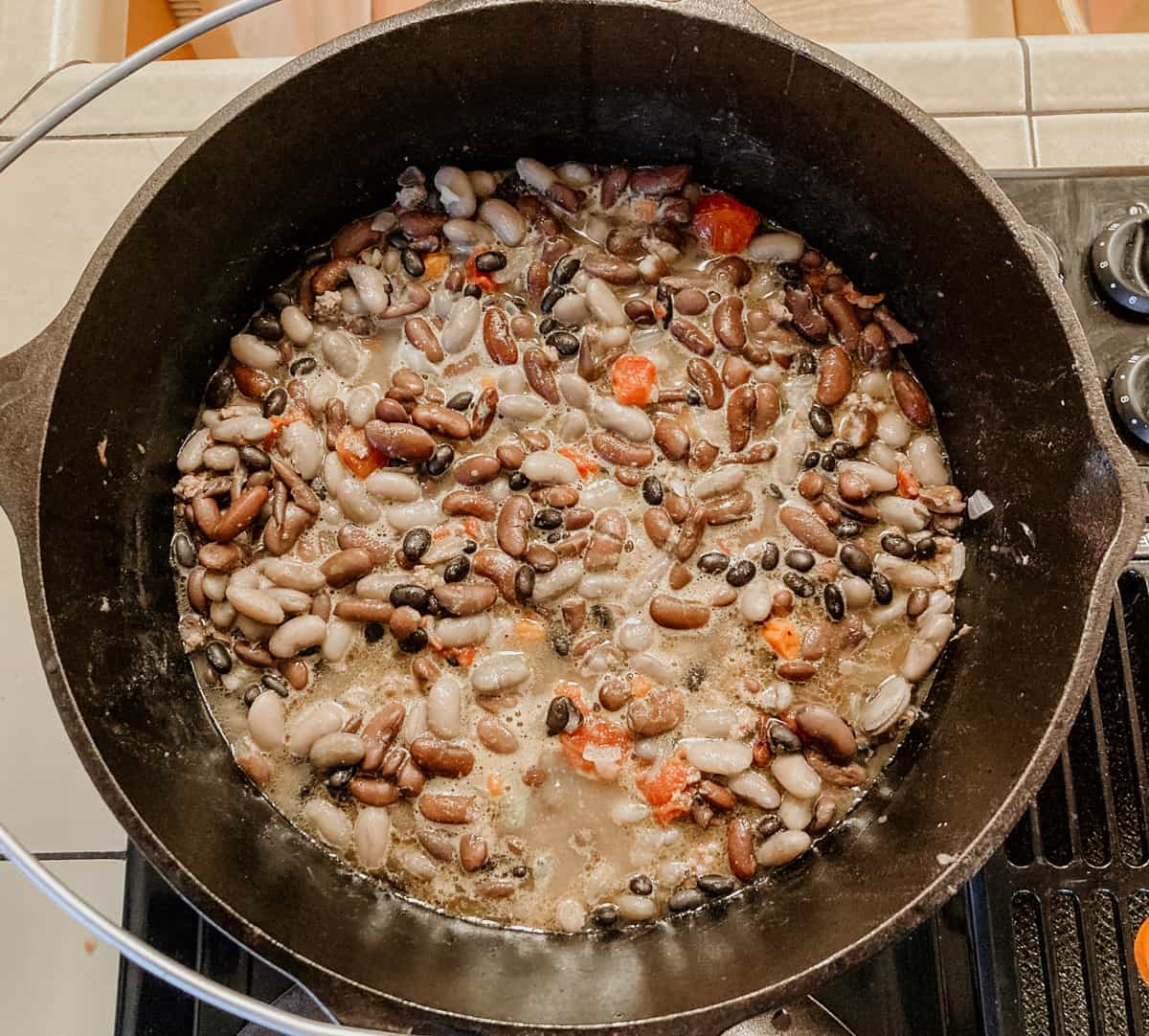
15. Bring to a Boil, Reduce Heat to Low, & Simmer
Allow the three sisters bean stew to simmer for several minutes. You should notice that the stock thickens. Turn off the stove when finished. Remove the bay leaf and enjoy.

Conclusion for Three Sisters Bean Stew Recipe
Three sisters bean stew is one tasty dish and there's plenty of knowledge to soak up in addition to delicious broth. Grab yourself some cornbread and dig in.
Also, all of these ingredients are excellent kitchen staples to keep stocked in your fridge and pantry as they can be used in a wide variety of recipes.
If you like this recipe, don't miss this Jollof Rice With Beans or Bahian Chicken Stew.
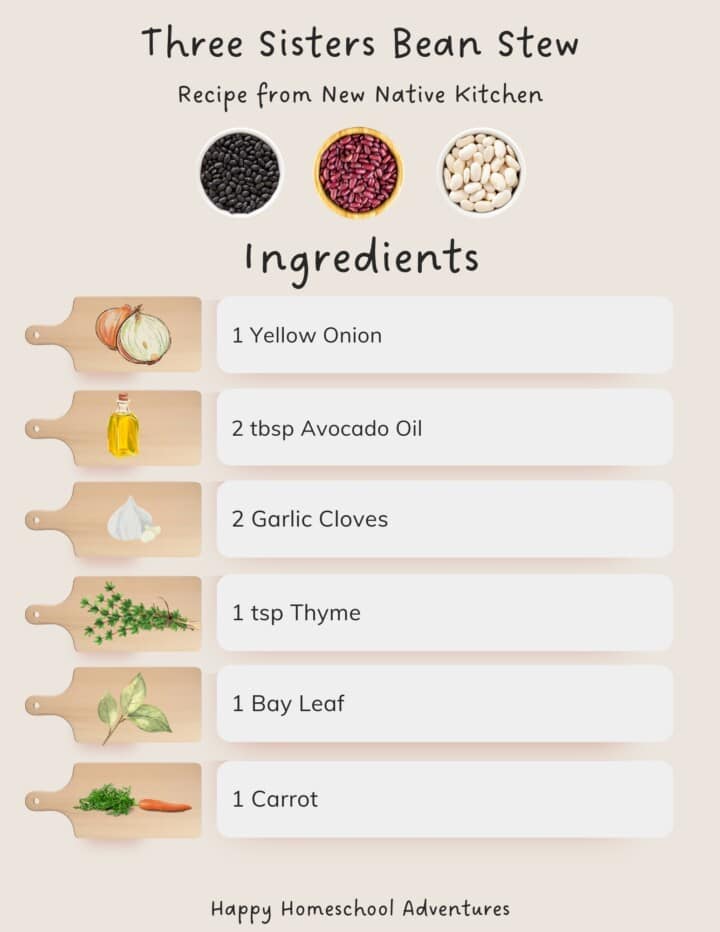
Three Sisters Bean Stew
For you to try at home:
Free Recipe for Pre-Readers and Up
Grab your free printable recipe cards above. Kids can gather ingredients using the ingredient list, gather their equipment with the tools list, and prepare the meal using the step-by-step recipe cards, with assistance as needed.
The cards are easy to use, include pictures, and encourage confidence and independence in the kitchen. They also make an excellent addition to your Montessori continent box for North America.
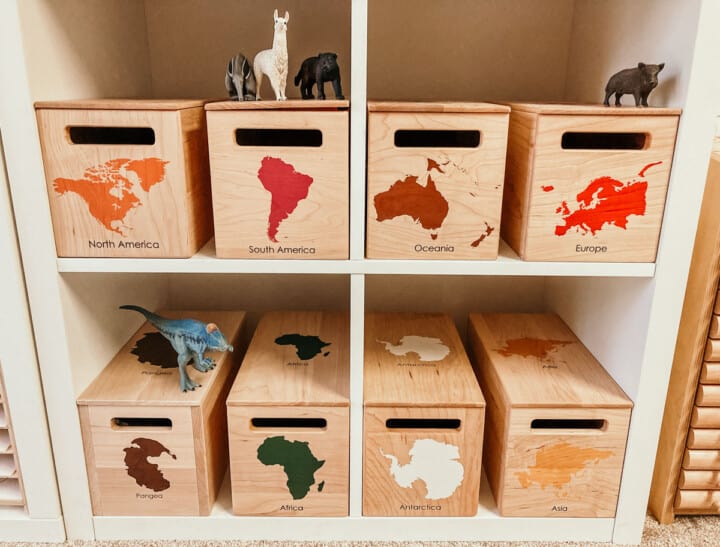
Montessori Continent Boxes
Explore every continent with these solid maple hardwood boxes.
More Native American Resources
- Smithsonian National Museum of the American Indian Hopi Festival - Hopi Corn Dance, Qaʼ ö
- American Indians in Children's Literature (AICL)
- Smithsonian National Museum of the American Indian: American Indian Responses to Environmental Challenges
More in the Kitchen
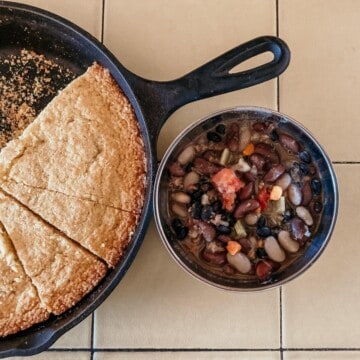
Three Sisters Bean Stew Recipe
Equipment
- Prep Bowls or Jars
- Large Spoon
- Dutch Oven or Large Pot
- Learning Tower as needed
Ingredients
- 2 tablespoon avocado oil
- 1 yellow onion
- 2 cloves garlic
- 1 teaspoon thyme
- 1 bay leaf
- 1 carrot
- ½ stalk celery
- salt
- pepper
- water
- 1 cup kidney beans cooked
- 1 cup cannellini beans cooked
- 1 cup black beans cooked
- ½ cup diced tomatoes
- 2 ½ cups chicken stock or vegetable or broth
Instructions
- Soak the Kidney Beans for 6 Hours: Wash your hands with soap and water. Weigh the kidney beans needed using a kitchen scale. Place the kidney beans in a mason jar or bowl and add enough water to cover the beans. Next, add 1 teaspoon of salt and stir. Check periodically to make sure all of the beans are submerged.
- Drain the Water: Wash your hands before returning to the kidney beans. Pour the contents of the mason jar into a colander to drain the water.
- Weigh the Cannellini Beans using the kitchen scale. Introduce or review any conversions as needed. Many kitchen scales include conversions kids can explore as they cook. To extend the learning, compare the value on a labeled jar to the weight of the beans using the kitchen scale.
- Rinse the beans with water.
- Transfer the Kidney Beans & Cannellini Beans to a Pot half-filled with water.
- Add salt to the pot.
- Cook the Beans: Turn the stove on high. Bring the beans to a boil. Once the water is boiling, turn the stove down to low and simmer. Place the cover on the pot. Cook for 45 minutes. This is a great time to explore the cookbook a bit further. Our kids enjoy the pictures and read more about Hopi culture before moving on to practicing their knife skills.
- Chop the Vegetables: If you're using canned beans for this three sisters bean stew recipe, you can start here and then skip to step 11 to finish the recipe.Chop the onion, garlic, carrot, and celery. Now is also a great time to dice the tomatoes if they're not already. Place the tomatoes in a separate bowl.
- Repeat Steps 3-5 for the Black Beans: Once the kidney and cannellini beans have cooked for 45 minutes, it's time to work with the black beans. Weigh, rinse, and transfer the black beans to the large pot containing the kidney beans and cannellini beans. Cook all three varieties of beans together for 45 minutes or until tender.So that's a total cook time of 90 minutes for the kidney beans and cannellini beans.
- Drain the water: Pour the contents of the pot into a colander to drain the water.
- Add Avocado Oil to the Pot: Change the temperature of the stove to medium. Add the oil. When the oil is hot, proceed to the next step.
- Add the Chopped Vegetables: Add the onion, garlic, bay leaf, carrot, and celery to the pot.
- Add Seasoning to the Pot: Add thyme, salt, and pepper. Stir and cook for about 5 minutes, or until the onion is soft and translucent.
- Add the Beans, Tomatoes, & Chicken Stock to the Pot.
- Bring to a Boil, Reduce Heat to Low, & Simmer: Allow the three sisters bean stew to simmer for several minutes. You should notice that the stock thickens. Turn off the stove when finished. Remove the bay leaf and enjoy.
Notes
- You can keep this stew in the refrigerator for 3-4 days or in the freezer for 4-6 months
- Don't leave food sitting out at room temperature for extended periods
- Never leave cooking food unattended
- Use oils with high smoking point to avoid harmful compounds
- Always have good ventilation when using a gas stove
- See more guidelines at USDA.gov.
- Full Lesson Info and Pictures at: https://happyhomeschooladventures.com/bean-stew
Nutrition
Estimated nutrition information is provided as a courtesy and is not guaranteed.

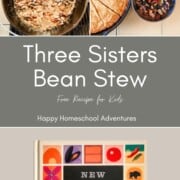
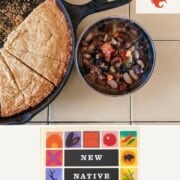
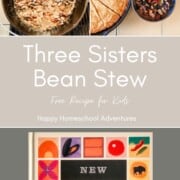
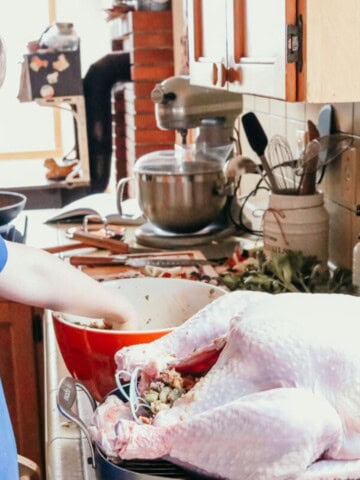

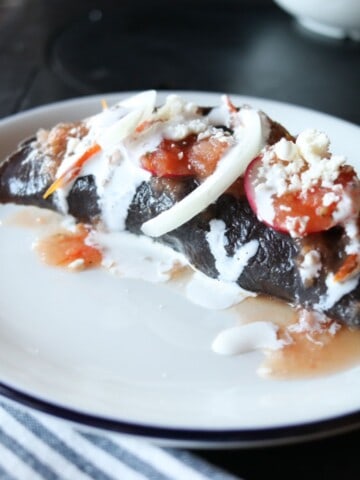
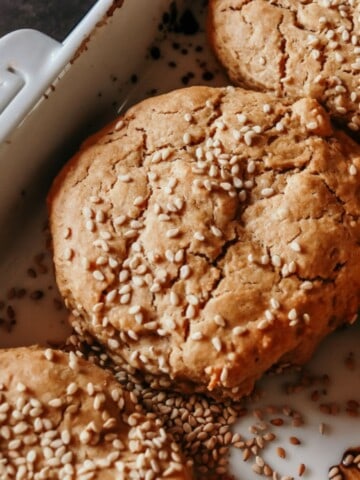
Leave a Reply